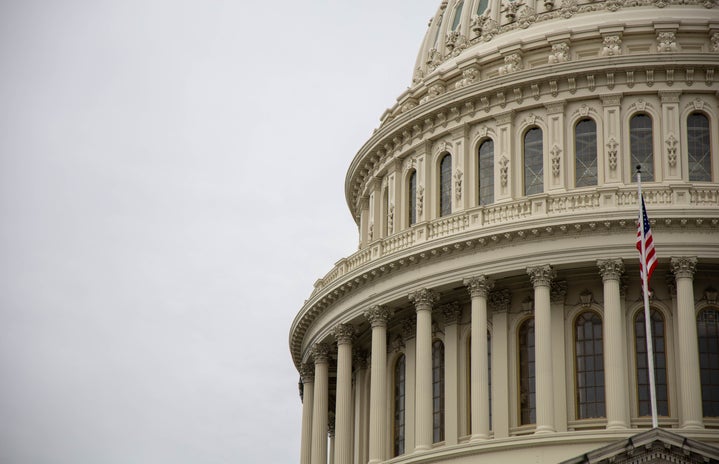With an all-time high of 2.5 million recorded migrants at the US-Mexico border in 2023, policymakers and governments from all sides are looking for ways to deal with the migration crisis quickly. Canada and the U.S. have been the most affected by the migrants who come mainly from Latin and Central America, but there are also a great deal who come from Africa or Asia. As a result, Canada and the U.S. have recently been emphasizing policy options to deal with the crisis, from stricter regulation to welcoming more people. However, how both countries plan to implement such policies won’t effectively deal with the issue at hand, nor will migrants receive the aid they need.
THE UNITED STATES
Starting with the U.S., the politics surrounding immigration is a significant reason why nothing is getting done and why the border continues to be a site of dissatisfaction among Americans. Priorities in the U.S.. are skewed between the left and right as the Democrats are sacrificing immigration policies to get support from Republicans to give more funding to Ukraine. This shift to the right on immigration can be seen in the H.R 2 Secure the Border Act, which passed in the House and intends to bring about more strict measures at the border, including reigniting the construction of a border wall.
These policies, and where it looks like the U.S. is heading with immigration policy, are not going to ease the influx of undocumented immigrants but would harm migrants who are already in a precarious position. With over 10,000 migrants arriving at the border per day in December of 2023, only for those who were processed, stricter measures are almost impossible considering the vast border and ways that migrants are already illegally crossing the border. A stricter process would only exacerbate the amount of illegal entries through smuggling, walking, or entrance by train. This puts the migrants at greater risk of trafficking or violence as they are essentially forced to find another way in.
Policymakers must acknowledge that the, mainly South and Central American, migrants at the border are there because they are desperate and this is one of their last options. These individuals would not be forced to take part in these illegal activities if their conditions at home were not dire. Stricter measures will only harm migrants further by pushing them into more dangerous and illegal situations. By acknowledging this, policymakers would better understand what would alleviate the migration crisis.
CANADA
Although Canada is not as severely impacted by the migration at the U.S.-Mexico border, many migrants continue their journey and try to enter Canada. Because of this, Canada has made efforts and claims said to be in the name of alleviating the migration crisis. The most recent effort was the goal of bringing in 500,000 immigrants per year after 2025 as well as a more targeted initiative to the border issue that seeks to bring over and give residence to 15,000 immigrants from Colombia, Venezuela, and Haiti.
Both goals are ambitious, however, they accommodate more to Canada’s economic interests rather than being effective policies that would alleviate the humanitarian issues they claim to be in service of. The goal that Canada has set out to bring in more immigrants is not without incentive as there is a priority to tradespeople, as well as those that Canada sees will improve its economy and fill jobs, Those who are migrating through dangerous and illegal routes and are immigrating en masse are not prioritized, as such people are often unskilled workers and poor.
The new pathway for Colombians, Venezuelans, and Haitians is claimed to be a “response to the significant surge in irregular migration…leading to heightened concerns of migrant smuggling, physical insecurity, and exploitation.” However, the policy won’t effectively tackle such issues either. Not only is the policy limited to 15,000 people and has many prerequisites, such as having an immediate family member who is a Canadian resident, but the policy also lacks a better range of nationalities that make up those at the border. In the first half of September of 2023, 142, 037 migrants were registered at the US-Mexico border. Only 37,538 were of Colombian, Venezuelan, or Haitian nationality.
This policy may greatly help many people who fit the criteria and are looking to leave either of the three countries. However, the question of who will be prioritized and who is making up the migration crisis that Canada claims to be responding to makes it clear that the policy will be ineffective in dealing with anything it claims to be aiding.
BETTER SOLUTIONS?
If the U.S. and Canada are genuinely seeking to ease the migration crisis at the border and the issues that come with that, their governments must see the root causes as the only place where the crisis will diminish. Issues that persist in the countries where such migrants are coming from include unstable economies, lack of upward mobility, and violence. All reasons push people out of their country whether they want to.
The solutions do not necessarily just have to consist of strict or open borders. Governments should consider how to shift some of their resources and efforts to the root causes and ease the flow of migration where it starts, not where it all accumulates and ends.


